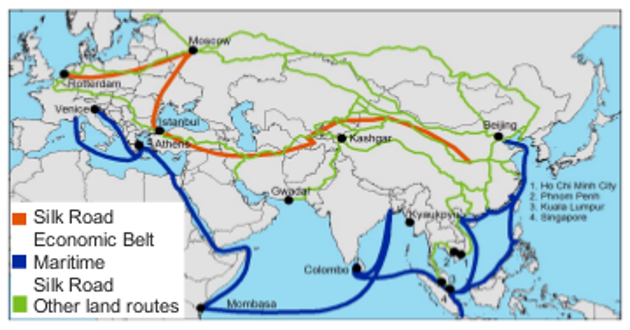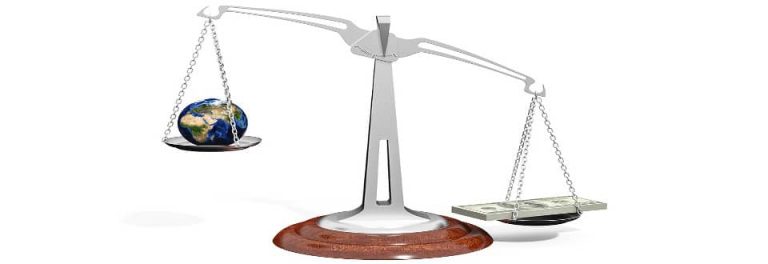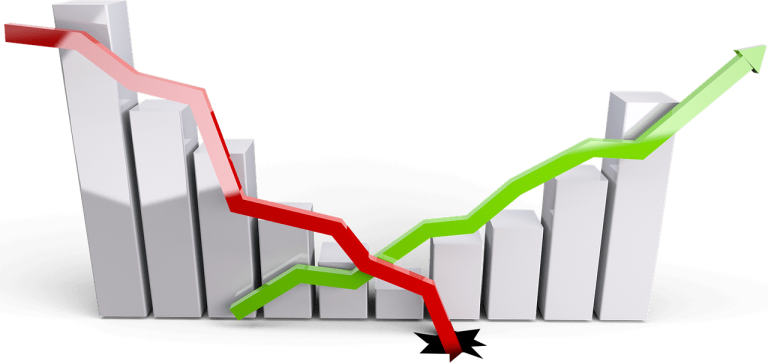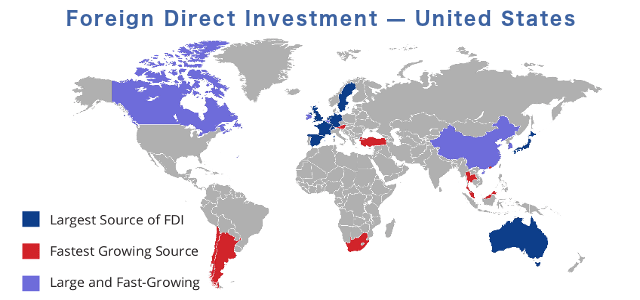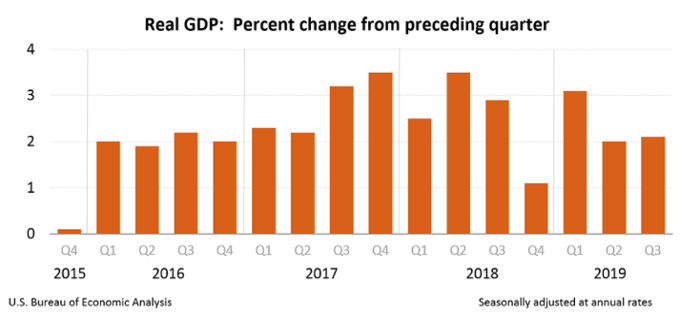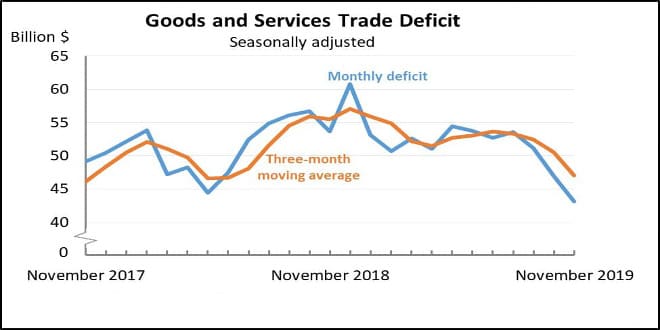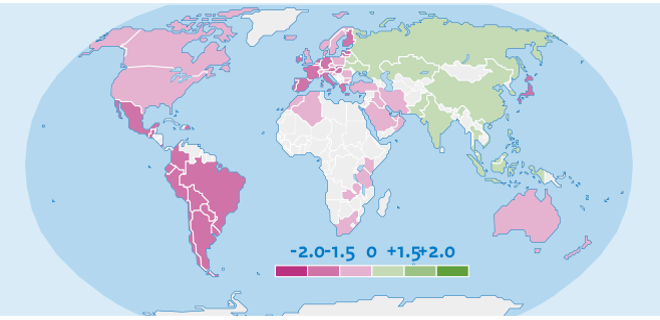An Interconnected & Interlinked World
of Business, Trade, and Commerce.
of Business, Trade, and Commerce.
Real GDP | GDP Nominal vs GDP PPP
Investment Perspective
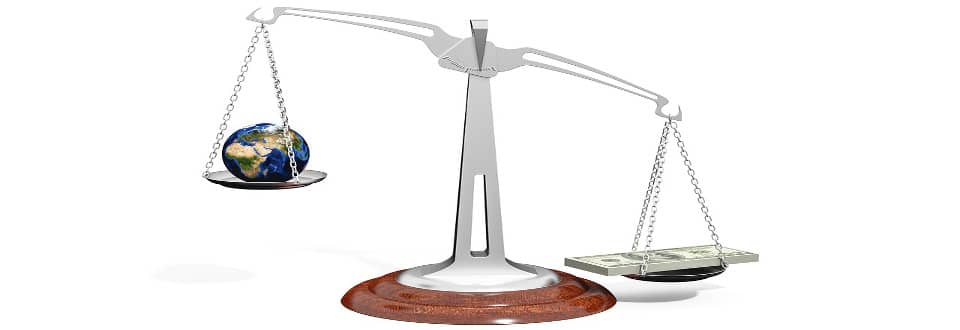
In evaluating and analyzing global investment opportunities and, also in the business decision making process we need to have some fundamental data and facts available to us. Most important of these facts and data are the actual comparative state of the economies and GDPs of various countries and regions in the world.
We need to know how fast the individual economies are growing relative to other economies? For example; is China’s GDP larger than that of the US GDP? And, what is the real rate of growth of their respective economies?
On the surface it seems quite simple; just look at the official release of data on the respective economies and GDP? But thera is one major obvious problem – beside many other underlying and ‘not-so-obvious’ issues, in understanding and decoding the real relative state of various economies is the matter of currency conversion rates.
When it comes to comparing the national economies of different countries by their Nominal GDP, converting its value into a common currency—typically the US dollar, presents a very ’unrealistic’ picture, since all other currencies in the world relate to the US dollar—and, the US dollar itself is not measured in any tangible manner.
Further, currency conversions rates – or the market rates as they are commonly described, are ‘fixed’ to gain an edge in global commerce. And, in case of the US Dollar—which is the dominant global trade settlement currency, and also the dominant global reserve currency, its value is just the matter of perception!

Therefore, in reality, when we look at the GDP of ‘non-US Dollar’ economies, we are looking at—somewhat, a manipulated and distorted image of the real GDP.
The problem is that a distorted view of the global relative economies and GDP is not very conducive in the decision making process—especially when the large sums of capital investment or business prospects are involved.
It is therefore pertinent that businesses have in place a mechanism to filter out the distortions and be able to see and understand the real state of the GDPs of the target economies, their various components and the inclusions and exclusions etc.
Nominal vs Purchasing Power Parity Methods
By definition, GDP is the total market value of all final goods and services produced in an economy in a given period – normally, a year. Value of GDP is given in an economy’s own currency. To compare the GDP of various countries, the value their GDP is converted into a common currency—typically the US dollar.
There are two methods to convert GDP into a common currency: Nominal and Purchasing Power Parity (PPP).
Nominal GDP computation method translates a non-US$ country’s economy in terms of the current conversion rate of that country’s currency. PPP GDP, on the other hand, uses the method that is based on the real value of a country’s production.
The following description taken from the IMF will help elaborate the effect of Nominal GDP vs GDP:
The PPP exchange rate is the rate at which the currency of one country would have to be converted into that of another to purchase the same amount of goods and services in each country

Nominal GDP, as we can see, presents quite a ’muddy’ comparative picture of the countries’ economies. For example: If we compare the GDP on a Purchasing Power Parity (PPP) basis, Chinese Economy is bigger than the US economy.
China GDP PPP surpassed that of the US during 2014. China GDP PPP had reached $18.3 Trillion in 2014, whereas US GDP PPP was $17.5 Trillion at that time. China’s GDP (for the year 2018) in terms of Purchasing Power Parity was US$27,449 Trillion against the US’ 21,482 Trillion!
Further, with China Riding high on the fast tracks of the Belt and Road Initiative & Made in China 2025 projects, the gap between the GDPs of the US and China is expected to increase at a faster pace. But, the real picture of the two economies will not be visible by looking at the nominal GDPs of the two.
Per the IMF forecasts, China’s GDP PPP will reach $37.2 Trillion in comparison to US’ $24.7 Trillion by 2023.
✍ The point that should also be noted is that beside just looking at the GDP, there are other factors to be considered in making investment/business decisions like, the state of a target economy’s infrastructure and politico-social environment. But, that is a separate topic in itself and is covered separately.
✍ The study of various computing methodologies—and their impact on the declared nominal GDPs, is an interesting subject worth delving into. It is covered separately under its own topic: ‘GDP—Computing Methodologies’.
The tables below present the GDP of Top 50 Economies of the World—Calculated separately under the Nominal GDP method and PPP GDP method. Together, these tables serve to highlight the contrast in the economic outlook of economies under these two methodologies.
Top 50 Economies By GDP Nominal
[Data are in Billions of US Dollars]
| Rank | Country/Economy | 2019 | % Share | Diff. | 2023 |
|---|---|---|---|---|---|
| 1 | United States | 21,482.41 | 24.4 | – – | 24,671 |
| 2 | China | 14,172.20 | 16.1 | 7,310 | 19,581 |
| 3 | Japan | 5,220.57 | 5.93 | 8,952 | 5,908 |
| 4 | Germany | 4,117.07 | 4.67 | 1,104 | 4,937 |
| 5 | India | 2,957.72 | 3.36 | 1,159 | 4,330 |
| 6 | France | 2,844.70 | 3.23 | 113 | 3,364 |
| 7 | UK | 2,809.91 | 3.19 | 34.8 | 3,257 |
| 8 | Italy | 2,112.80 | 2.40 | 697 | 2,396 |
| 9 | Brazil | 1,929.71 | 2.19 | 183 | 2,351 |
| 10 | Canada | 1,820.36 | 2.07 | 109 | 2,322 |
| 11 | S. Korea | 1,699.68 | 1.93 | 121 | 2,055 |
| 12 | Russia | 1,649.21 | 1.87 | 50.5 | 1,818 |
| 13 | Spain | 1,474.12 | 1.67 | 175 | 1,758 |
| 14 | Australia | 1,464.41 | 1.66 | 9.71 | 1,794 |
| 15 | Mexico | 1,242.39 | 1.41 | 222 | 1,527 |
| 16 | Indonesia | 1,066.84 | 1.21 | 176 | 1,446 |
| 17 | Netherlands | 933.18 | 1.06 | 134 | 1,107 |
| 18 | Saudi Arabia | 795.58 | 0.903 | 138 | 889.5 |
| 19 | Switzerland | 731.14 | 0.830 | 64.4 | 873.6 |
| 20 | Turkey | 631.16 | 0.717 | 100.0 | 958.3 |
| 21 | Taiwan (China) | 626.72 | 0.712 | 4.44 | 774.0 |
| 22 | Poland | 581.29 | 0.660 | 45.4 | 787.7 |
| 23 | Sweden | 563.24 | 0.639 | 18.1 | 669.1 |
| 24 | Belgium | 545.19 | 0.619 | 18.1 | 637.9 |
| 25 | Thailand | 524.25 | 0.595 | 20.9 | 652.2 |
| 26 | Austria | 469.66 | 0.533 | 54.6 | 559.3 |
| 27 | UAE | 455.59 | 0.517 | 14.1 | 533.6 |
| 28 | Norway | 448.46 | 0.509 | 7.12 | 503.5 |
| 29 | Nigeria | 447.01 | 0.508 | 1.45 | 736.5 |
| 30 | Argentina | 408.03 | 0.463 | 39.0 | 540.7 |
| 31 | South Africa | 385.53 | 0.438 | 22.5 | 456.4 |
| 32 | Hong Kong-SAR | 380.86 | 0.432 | 4.67 | 479.2 |
| 33 | Ireland | 379.80 | 0.431 | 1.06 | 469.9 |
| 34 | Israel | 376.13 | 0.427 | 3.67 | 468.7 |
| 35 | Malaysia | 372.63 | 0.423 | 3.50 | 498.5 |
| 36 | Denmark | 362.15 | 0.411 | 10.5 | 438.1 |
| 37 | Singapore | 359.62 | 0.408 | 2.53 | 434.9 |
| 38 | Colombia | 355.16 | 0.403 | 4.46 | 422.6 |
| 39 | Philippines | 354.31 | 0.402 | 0.85 | 510.9 |
| 40 | Iran | 333.60 | 0.379 | 20.7 | 382.4 |
| 41 | Bangladesh | 313.51 | 0.356 | 20.1 | 445.6 |
| 42 | Chile | 305.56 | 0.347 | 7.95 | 377.7 |
| 43 | Pakistan | 298.31 | 0.339 | 7.25 | 407.3 |
| 44 | Egypt | 298.15 | 0.338 | 0.15 | 414.8 |
| 45 | Finland | 282.01 | 0.320 | 16.1 | 331.1 |
| 46 | Vietnam | 266.24 | 0.302 | 15.8 | 376.2 |
| 47 | Czech Republic | 264.50 | 0.300 | 1.74 | 342.9 |
| 48 | Iraq | 250.07 | 0.284 | 14.4 | 299.0 |
| 49 | Romania | 248.84 | 0.283 | 1.23 | 334.4 |
| 50 | Portugal | 242.83 | 0.276 | 6.01 | 283.8 |
| Rank | World | 2019 | 88,081 | Diff. | 108,712 |
Top 50 Economies By GDP Purchasing Power Parity
[Data are in Billions of US Dollars]
| Rank | Country/Economy | 2019 | % Share | Diff. | 2023 |
|---|---|---|---|---|---|
| 1 | China | 27,449.05 | 19.2 | – – | 37,198 |
| 2 | United States | 21,482.41 | 15.0 | 5,967 | 24,671 |
| 3 | India | 11,412.97 | 7.98 | 10,069 | 16,575 |
| 4 | Japan | 5,806.72 | 4.06 | 5,606 | 6,380 |
| 5 | Germany | 4,555.47 | 3.18 | 1,251 | 5,184 |
| 6 | Russia | 4,345.36 | 3.04 | 210 | 4,966 |
| 7 | Indonesia | 3,753.20 | 2.62 | 592 | 4,969 |
| 8 | Brazil | 3,524.06 | 2.46 | 229 | 4,149 |
| 9 | UK | 3,144.55 | 2.20 | 380 | 3,609 |
| 10 | France | 3,081.00 | 2.15 | 63.6 | 3,541 |
| 11 | Mexico | 2,696.45 | 1.88 | 385 | 3,256 |
| 12 | Italy | 2,474.39 | 1.73 | 222 | 2,748 |
| 13 | Turkey | 2,372.53 | 1.66 | 102 | 2,808 |
| 14 | Korea | 2,241.56 | 1.57 | 131 | 2,690 |
| 15 | Spain | 1,949.68 | 1.36 | 292 | 2,249 |
| 16 | Saudi Arabia | 1,942.56 | 1.36 | 7.12 | 2,277 |
| 17 | Canada | 1,930.68 | 1.35 | 11.9 | 2,227 |
| 18 | Iran | 1,627.14 | 1.14 | 304 | 1,885 |
| 19 | Thailand | 1,403.55 | 0.981 | 224 | 1,741 |
| 20 | Egypt | 1,396.98 | 0.976 | 6.57 | 1,897 |
| 21 | Australia | 1,383.93 | 0.967 | 13.1 | 1,654 |
| 22 | Taiwan (China) | 1,306.75 | 0.913 | 77.2 | 1,525 |
| 23 | Poland | 1,270.56 | 0.888 | 36.2 | 1,532 |
| 24 | Nigeria | 1,221.05 | 0.853 | 49.5 | 1,452 |
| 25 | Pakistan | 1,219.72 | 0.852 | 1.33 | 1,493 |
| 26 | Malaysia | 1,068.11 | 0.746 | 152 | 1,390 |
| 27 | Philippines | 1,041.13 | 0.728 | 27.0 | 1,458 |
| 28 | Netherlands | 1,018.97 | 0.712 | 22.2 | 1,191 |
| 29 | Argentina | 922.95 | 0.645 | 96.0 | 1,109 |
| 30 | Bangladesh | 829.27 | 0.580 | 93.7 | 1,172 |
| 31 | South Africa | 819.09 | 0.572 | 10.2 | 948.1 |
| 32 | Colombia | 792.00 | 0.553 | 27.1 | 983.8 |
| 33 | UAE | 775.88 | 0.542 | 16.1 | 947.2 |
| 34 | Vietnam | 769.67 | 0.538 | 6.21 | 1,067 |
| 35 | Iraq | 733.93 | 0.513 | 35.7 | 878.6 |
| 36 | Algeria | 693.11 | 0.484 | 40.8 | 778.9 |
| 37 | Singapore | 582.55 | 0.407 | 111 | 698.4 |
| 38 | Switzerland | 573.36 | 0.401 | 9.19 | 660.1 |
| 39 | Belgium | 570.10 | 0.398 | 3.26 | 651.9 |
| 40 | Sweden | 566.77 | 0.396 | 3.33 | 660.5 |
| 41 | Romania | 543.17 | 0.380 | 23.6 | 663.5 |
| 42 | Kazakhstan | 534.67 | 0.374 | 8.50 | 663.8 |
| 43 | Hong Kong-SAR | 508.83 | 0.356 | 25.8 | 618.6 |
| 44 | Chile | 507.94 | 0.355 | 0.89 | 617.2 |
| 45 | Peru | 487.42 | 0.341 | 20.5 | 615.6 |
| 46 | Austria | 484.07 | 0.338 | 3.35 | 553.2 |
| 47 | Czech Republic | 417.21 | 0.292 | 66.9 | 496.9 |
| 48 | Norway | 415.13 | 0.290 | 2.07 | 481.3 |
| 49 | Ukraine | 410.81 | 0.287 | 4.32 | 502.9 |
| 50 | Ireland | 402.08 | 0.281 | 8.73 | 487.7 |
| Rank | World | 143,089 | % Share | Diff. | 177,424 |
[Source of Data: International Monetary Fund (IMF)]
元 $ € ¥ ₿
Information
Reports & Analysis
To Help Evaluate
The Potentials For
Business
&
Investment
In an Interconnected
World
-
The Belt and Road Initiative & Made in China 2025
Riding high on the fast tracks of the Belt and Road Initiative, Made in China 2025 is rapidly making inroads into the countries... Fierce competition from Chinese companies...
-
MIC 2025 || The Changing Landscape of Chinese Economy
It was in 2015 that China unveiled its Made in China 2025 (MIC 2015) project. Since then, Chinese economy is metamorphosing and changing at a breakneck pace...
-
Top Freight Forwarders by Country
Large scale ‘local area’ Freight Forwarders listed here, through their contacts and arrangements, also provide services on a global scale. Their main strength though lies in...
-
Most of the Top Global Freight Forwarders listed here serve all the major ports across the Globe, and, through relationships with their business partners, also provide a full suite of...
-
Glossary: Shipping, Freight, & Supply Chain Logistics
Like any other professional field, the shipping/freight industry has its own unique set of terminology—A rather extensive and complex one. Here we have compiled the Glossary of the most useful...
-
Global Foreign Direct Investment—Inward Flow
A comprehensive and historical Global FDI Inward-Flow Data spanning the period of 2000—2018. The data is compiled by grouping and associating a variety of economies together; by the state of...
-
The new phase of economy in China is an opportunity for the businesses. The emphasis is now on raising the living standards of masses, implementing supply-side reforms, and opening up...
-
Top 50 Container Ports in The World
Large Capacity & Super Busy Container Ports in a country are the pointers of country’s economic potentials...Bulk of the world trade in goods—more than 90% of it...
-
Supply Chain | Definition and Objectives
Supply Chain can be viewed as a network connecting a business to its suppliers and distributers to facilitate the production, processing, and distribution of its products to the consumers. It incorporates...
-
Global Business | Supply Chain & Logistics
With the technology—and global eCommerce platforms like Ali Baba, JD.com, Tancent, Kaola, Lazada, WooCommerce, VTEX, and Shopify etc, it is easier to sell products and services Globally.
-
Shipping Logistics | The Role of Service Providers
The logistics of getting the goods delivered to faraway destinations—especially to foreign markets, is a complex business. It requires the services of outside entities to...
-
Freight Forwarders | Role in Global Commerce
Freight Forwarders specialize in taking care of the entire process for their shippers | from warehousing to the shipping of their merchandise. They act as an agent and intermediary...
-
Real GDP | Nominal GDP vs GDP PPP
In evaluating and analyzing global investment opportunities and, also in the business decision making process, we need to know the actual comparative state of the economies of various countries and...
-
With the perspective of charting course for the expansion of business or investment, an analytical review of the ‘real value’ of a nation’s/region’s GDP is essential. To this end, an understanding of the methodologies used in...
-
New Global Business Order—The Global Information Stage
Whatever the business be, it has to be ready to play on the Global Stage. It is the global arena. The Supply-and-Demand chain is global. ..There is no business that can be considered as purely a...
-
Global Real GDP Growth Rate—And Forecast
Real GDP provides an inflation-adjusted measure that reflects the true value of all goods and services produced by an economy in term of real value of...
-
Foreign Direct Investment Inward Flow in The US—A Global Perspective
The Inflow of FDI in the U.S. was up by US $50 Billion in the 3rd quarter of 2019. FDI plays an essential role in the economic growth, creating jobs, and driving exports...The tables present...
-
US Gross Domestic Product: 2019—By Quarters
Real US GDP increased at an annualized rate of 2.1 percent in the 3rd quarter of 2019—that was up from the second quarter. Real gross domestic income (GDI)...
-
Foreign Direct Investment—Impact and Analysis
Foreign Direct Investment (FDI) plays an important role in the development and growth of any country’s economy - especially the developing countries. But, in actual practice...
-
Foreign Direct Investment and Business in China
China is establishing itself as the Model Destination for FDI inflow and a hub for corporate relocation and R&D...
-
US Global Trade & Top Trading Partners | Year-to-Date
Since hitting the peak in November 2018, U.S. global trade deficit in goods and services has been on the decline. But, the declining trends in both Imports and exports...
-
The Growth of Mobile Payments and Virtual Banking—A Global Perspective
Mobile Payments, Virtual Banking, and other modes of mobile transactions - both at consumer and commercial level, are growing globally at an ultra fast pace — more so in China and Asia Pacific and...
-
Belt and Road Initiative—Objectives & Achievements
As of the end 2019, the BRI — a project to interlink the global economies with China, includes 140 countries—encompasing more than 2/3 of the world’s population. The trade on BRI is...
-
In 2019 US imports from China dropped more than 12.5 percent to US$456 billion (Source: United States’ Census Bureau ) while China’s imports from the US dropped to US$122.7 billion...
-
Humans by nature - or by need, are traders. We trade our work, services, produce, or products for money. Then, we exchange that money for the goods and services that we need. Any excess/leftover money is either directly invested or deposited in the banks—thus, making the money to recirculate in the economy again.
Information, Data, and Reports organized alphabetically By Topic:
Global Business
Investment
Trade & Commerce
Always The Key to
to Wealth & Prosperity
Since before the days of
Camel Caravans & Sailboats


